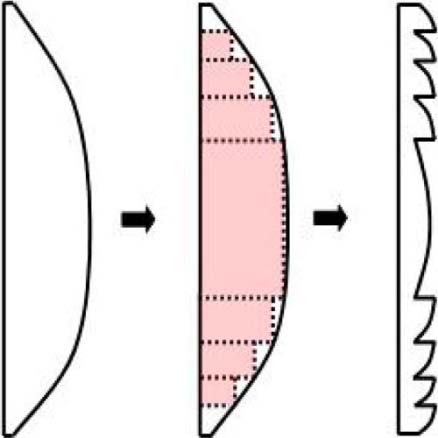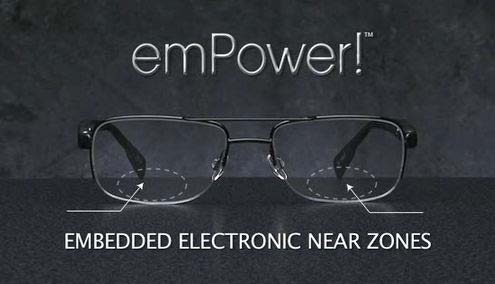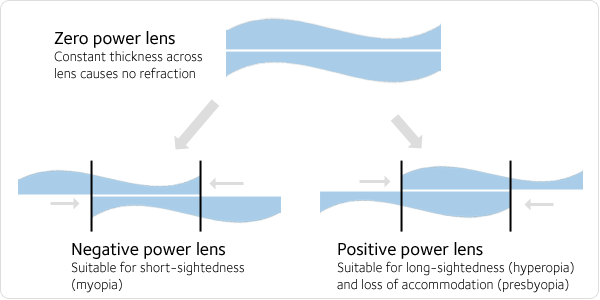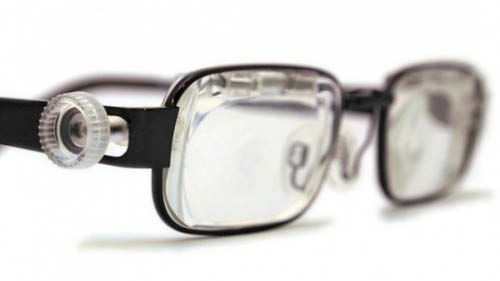Multiple industrial applications of a precision diamond machining facility developed for Astronomical Instrumentation (Precision Optics)
Submitting Institution
University of DurhamUnit of Assessment
PhysicsSummary Impact Type
TechnologicalResearch Subject Area(s)
Physical Sciences: Other Physical Sciences
Technology: Communications Technologies
Summary of the impact
A facility for precision diamond machining of optical components arose from research at
Durham University to produce instruments for large telescopes, including NASA's James Webb
Space telescope. This now provides a specialist service to industry, with contracts worth over
£2.0M from >20 companies over the past 5 years. The users span applications including
ophthalmics, automotive optics, microstructures for backlit displays and IR optics. An emerging
application is the use of high precision machine metal moulds to reproduce ophthalmic lenses for
spectacles. Examples include PixelOptics (USA) who make high-end electronically corrective
eyewear, which has won several ophthalmic industry R&D awards, and Eyejusters (UK), which
employs complex surface slide lens technology to provide low cost spectacles aimed at improving
the lives of people in the developing world.
Underpinning research
The Centre for Advanced Instrumentation (CfAI) in Durham Physics has an extensive track
record in producing high precision instrumentation for use in Astronomical Research. They have
zparticular expertise in building Integral Field Units (IFU's), where a wide field of view is covered by
multiple optical lenses, each one feeding into a spectrograph slit. The data then give full spectral
information for each pixel, as well as an overall image.
For optical wavelengths the light from each lens is typically fed down a fibre in order to connect
it to the spectrograph, but this approach is impractical for IR as the entire instrument has to be
cooled to low temperatures. Instead, a new fibre-free concept, termed the `Advanced Image Slicer'
was developed from research funded by the PPARC Rolling Grant and published by Dr Robert
Content (member of Durham Physics from 1994-2011) in 1997 [1]. This uses powered micro-optics
to slice the image into narrow segments, and then aligns these into a single long image which is
sent to the spectrograph. The reduction in optics size means that the instrument can be more
compact so it can fit into a cooler, but the increase in complexity meant they are technically difficult
to produce.
A research programme led by Professor David Robertson (member of Durham Physics 1996-
present) funded by successive PPARC Rolling Grants and a PPARC PIPSS award
(PPA/I/S/1998/00107) with Precision Optical Engineering Ltd investigated the development of
multi-faceted metal optics specifically for applications related to IR Image Slicing Instrumentation.
The CfAI group invested in the diamond machining technology required to produce the image slicer
optics funded by a £0.5M University SRIF award, with further enhancements to the facility provided
by a combination of continued STFC rolling grant support, £1.1M Regional Development Agency
funds and £0.25M CfAI internal funding generated from spin-off optics manufacturing projects. New
techniques to fabricate extremely high accuracy optical components were developed using this
equipment. The results of this research were published by CfAI members [2-5], showing that they
could manufacture and test complex shapes with surface form errors of 10-20nm and a surface
roughness of 5-10nm. This is the only facility in the UK (in either University or Industry) that is
capable of machining these types to components to such high precision.
CfAI's expertise in this area was such that they were selected to manufacture and test an IFU
for the Near Infrared Spectrograph, an instrument for the James Webb Space Telescope (JWST).
This is NASA's successor to the Hubble space telescope and is designed to be the premier
observatory of the next decade. The successful bid was led by Surrey Satellite Technology Ltd.
(SSTL), a UK company with extensive space experience, but relied heavily on the technical
expertise of CfAI to produce the optics. SSLT let a £0.47M contract to CfAI for the IFU, which was
delivered in 2009.
References to the research
2. Design for test and manufacture of complex multi-component optical instruments, Rolt, S.,
Dubbeldam, C.M., Robertson, D.J., Ryder, D.A., 2008, Proc. SPIE 7102, 10.
5. Flight model performance of the integral field unit for the James Webb Space Telescope's
near-infrared spectrograph. Purll, D.J., Lobb, D.R., Barnes, A.R., Talbot, R.G., Rolt, S.,
Robertson, D.J., Closs, M.F., Te Plate, M. (2010). Proceedings of SPIE-The International
Society for Optics and Photonics Modern Technologies in Space- and Ground-based
Telescopes and Instrumentation, San Diego, California.
6. Refractive elements for the measurement of the orbital angular momentum of a single
photon. Lavery, M.P.J., Robertson, D.J., Berkhout, G.C.G., Love, G.D., Padgett, M.J.,
Courtial, J. (2012). Optics Express 20(3): 2110-2115.
The quality of the research in these papers is evidenced by the fact that all curved Integral Field
Units in use on 8m class telescopes (the biggest currently available) are based on this design and
manufacturing process. These include KMOS on the VLT, GNIRS on Gemini. The IFU for
NIRSPEC on JWST was manufactured and tested by CfAI as described above, and the design
concept is also used by the MIRI instrument on JWST.
Details of the impact
The diamond machining facility was established in 2006 as part of the CfAI research
programme on precision instrumentation for large telescopes. However, the commercial
applications of this unique facility were soon apparent, and it has been available as a specialist
service to industry since 2008. Over 20 companies have placed contracts worth ~£2.0M over the
past 5 years of operation [C1] for high precision optical and micro-optical components for a range
of applications including opthalmics, automotive optics, microstructures for backlit displays and IR
optics. Professor Robertson was awarded a Royal Society Industry Fellowship (2007-2010) in
recognition of his work with industry in the field of diamond machining.
A growing part of the market sector for precision optics is ophthalmic moulds. Typically plastic
spectacle lenses have been produced by using thermosetting plastics cast in polished glass
moulds. However, newer injection moulding techniques produce higher quality lenses, with higher
accuracy over a wider range in shape. This is a disruptive technology shift as the temperatures
required for injection moulding are not well matched to the thermal conductivity of the glass
moulds. Instead, this requires metal moulds, for which diamond machining techniques are
specifically applicable. This is particularly true for progressive (freeform) moulds, where the
diamond machined products produce lenses which are far superior in quality and shape to that of
their conventionally produced counterparts. CfAI have worked with several companies developing
prototype moulds in Aluminium, then moving to medium wear production tooling in Nickel
Phosphor plated moulds and are now producing hardened steel moulds using a specialized
machining process. The steel mould lifetime is typically 10x longer than Nickel, which itself is 10x
longer than Aluminum.
One example of the impact of this work is the collaboration with Pixel Optics, an ophthalmic
technology company based in Virginia, USA. They had the idea to make bifocals where the near
vision lens was based on a liquid crystal, so could be switched on and off when required so as to
remove the reading zone distortion that is always present with standard bifocals or progressive (no
line bifocal) lenses. They based their near vision zone on a Fresnel lens (see Fig 1) as these can
be made much thinner than standard optics, and can be filled with a liquid crystal, whose refractive
index could be controlled electronically.
The electro-active lens technology, as it was subsequently called, was developed by The
Technology Partnership, based in Cambridge, UK who in turn contracted CfAI in 2009 to develop
the diffractive lens manufacturing techniques. Through an 18 month, £350,000 contract CfAI
developed the capability to produce an elliptical Fresnel lens machined off axis of a spherical
standard lens mould. This unique technique was key in enabling the electro-active lens production
and was based on the Fast Tool Servo machining techniques developed in the earlier research
programme for the machining of the IFU components [1-6].
The active eyewear containing the lenses is sold by Pixel Optics as the emPower! product
range of spectacles (Fig 2), now selling in the United States for about $1,500 a pair [C2]. This was
launched at the Consumer Electronics Show (CES) 2011, where it was highlighted as among the
`Best of CES2011' by PC Magazine [C3]. These successes enabled the company to raise $45M in
financing for further development of the product. The Empower! Glasses won the extremely
prestigious 2012 Gold Edison Award for Quality of Life for innovation and business [C4]. These
were also named as one of 100 top technology products in the 2012 R&D 100 Awards, the
equivalent of the Oscars for R&D. "We're truly honoured to receive an award that celebrates
original achievement in innovation and technology," said the President and Chief Executive Officer,
Pixel Optics. "emPower! represents a clear breakthrough in eyewear — leveraging advanced
technology to give wearers precise control over their vision for the very first time." [C5]
 Fig 1 Standard lens compared to a Fresnel lens
Fig 1 Standard lens compared to a Fresnel lens
 Fig 2 The Fresnel lens engraved onto the normal lens
of the emPower! Glasses
Fig 2 The Fresnel lens engraved onto the normal lens
of the emPower! Glasses
The precision diamond machining technology developed at Durham University [1-6] has also
been used to produce a very different type of spectacles for a very different market. There are an
estimated 670 million people (World Health Organisation) who live in the developing world with
poor eyesight but without the glasses they need to be able to read due in the main to the lack of
qualified practitioners able to test eyesight and prescribe corrective eyewear individually.
Eyejusters are a small company based in Oxford, UK that have developed a way to improve vision
by designing spectacles that are adjustable. The principle behind this is that adjustable glasses
can be made to accommodate the needs of a number of people with a range of prescriptions,
allowing an individual wearer to change the power of the glasses for maximum clarity of vision.
This is achieved by sliding two (Alvarez) lenses with a very specific shape past each other. The
combination acts as a single lens with a changing optical path as the lenses are moved with
respect to one another i.e. varying optical power (Fig 3). However, the shape of these lenses is
quite challenging to manufacture. Eyejusters are using the precision machining capabilities at CfAI
to manufacture the lens masters, which are then reproduced in lightweight, resilient, cheap plastic.
These are assembled into glasses, with a dial to slide together two separate lenses until their
combined focal power matches the corrective requirements of the wearers' eyes (Fig 4: C6). The
method, known as self-refraction, has been tested in several peer-reviewed studies [C7] and has
been the subject of fieldwork in Ghana, Nepal, Malawi, Nicaragua, China and South Africa. In
Morocco, the company worked with Peace Corps volunteers, providing almost 800 pairs of glasses
to young adults at 10 sites across the country [C8].
 Fig 3: Alvares lens giving variable optical paths
Fig 3: Alvares lens giving variable optical paths
 Fig 4: Eyejusters, with dial to slide lenses
Fig 4: Eyejusters, with dial to slide lenses
Sources to corroborate the impact
C1 Table of companies with contracts to DPO
C2 PixelOptics web site 1
http://pixeloptics.com/pages/electronic_eyewear.html
C3 `Best of CES 2011'
http://www.pcmag.com/slideshow_viewer/0,3253,l=259144&a=259142&po=9,00.asp
C4 Edison Gold award for Quality of Life
http://www.businesswire.com
/news/home/20120503006550/en/emPower!-PixelOptics-Named-2012-Gold-Edison-Award
C5 2012 R&D 100 award winner
http://www.businesswire.com/news/home/20120620006251/en/emPower!-PixelOptics-Named-2012-100-Award-Winner
C6 Eyejusters web site
http://www.eyejusters.com/home/
C7 self refraction peer reviewed study
http://www.bmj.com/content/343/bmj.d4767.abstract
C8 Morocco case study
http://www.eyejusters.com/morocco/
1 Pixeloptics filed for Chapter 7 bankruptcy on 4th November 2013 and its IP (assets with over 400 granted
and filed patent applications) are currently up for sale. Its web site has been taken down, but printouts of this
prior to November 2013 are filed with evidence.
http://www.roanoke.com/news/business/2349229-12/roanoke-county-eyeglass-innovator-pixeloptics-files-for-bankruptcy.html